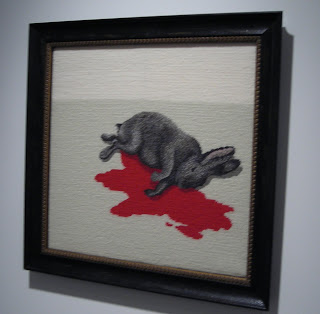Lastly, I want to thank the great people at the CUE Art Foundation for this opportunity. I stopped by the CUE booth on Sunday and talked with Jeremy Adams and Talia Spetter. Here is a photo of the CUE booth. It seemed less commercial than most of the booths in its presentation with the display of an eclectic group of artists. Hopefully, it ended up being a great venue for them to promote the artists that they have worked with. According to Jeremy, Artropolis was very generous with CUE, giving them a reasonable not-for-profit rate. They also worked with them to present a performance piece with Chicago-based CUE grantee Cupola Bobber www.cupolabobber.com,
that didn't work out due to space constraints. The most interesting aspect of talking with Jeremy was that he said that CUE was able to pay for a booth, ship and insure works of art to adorn said booth, fly two people to Chicago from New York, and put them up for three nights for less than a booth fee at fairs in New York. As he also said, "Art fairs are here to stay." Most of the comments I've heard from dealers, artists, gallery owners and visitors seemed to echo this sentiment. I myself found it to be a good venue to see work from emerging artists around the world, although not a venue to really experience experimental work, but certainly an exhausting and over-stimulating experience. I have enjoyed blogging about it though.






